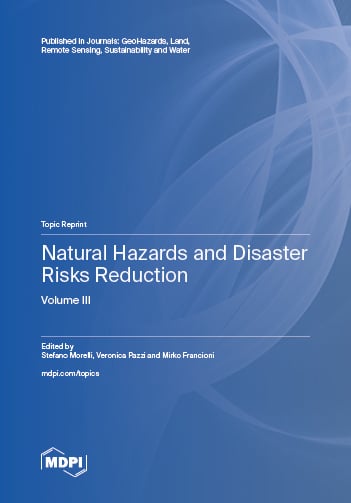- 1.6Impact Factor
- 2.2CiteScore
- 18 daysTime to First Decision
GeoHazards
GeoHazards is an international, peer-reviewed, open access journal on theoretical and applied research across the whole spectrum of geomorphological hazards, namely endogenous and exogenous hazards, as well as those related to climate change and human activity, published quarterly online by MDPI.
Quartile Ranking JCR - Q3 (Geosciences, Multidisciplinary)
All Articles
News & Conferences
Issues
Open for Submission
Editor's Choice
Reprints of Collections

Reprint
Natural Hazards and Disaster Risks Reduction
Volume IIIEditors: Stefano Morelli, Veronica Pazzi, Mirko Francioni

Reprint
Natural Hazards and Disaster Risks Reduction
Volume IIEditors: Stefano Morelli, Veronica Pazzi, Mirko Francioni

